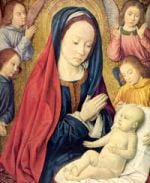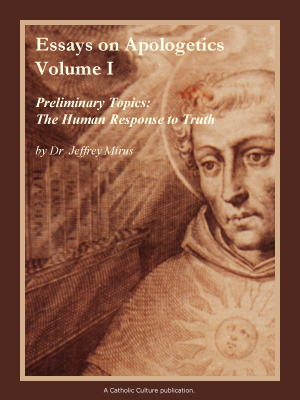Our Lady of the Cape
by Zsolt Aradi
The great devotion of the French people to the Blessed Virgin was carried over by the first settlers to New France--to the land along and above the St. Lawrence River. Here and in other parts of Canada the pioneers erected many shrines and chapels in her honor. In their constant struggle against the elements and the Indians, these people set up a double protection for their homes. They established guards, fortified the homestead where possible and at the same time built shrines dedicated to the Heavenly Protectress. They named the shrines after those beautiful, ancient cathedrals and holy places of France. The memories of the familiar places of the old country never faded, and found fresh expression in this veneration within the new territory. Fully aware of their role as pioneers, they accepted the challenge with deep religious faith.
The history of the settlers in Canada is filled with the most moving episodes of their unlimited confidence in Our Lady. The names of the rivers, villages, homesteads prove it.
But our particular interest begins with the Three Rivers settlement on the St. Lawrence River, which was dedicated to the Immaculate Conception. Later on, the neighboring settlement developed into a larger village and was named Cap de la Madeleine. Finally, the whole Cape territory became officially St. Mary's land. The Governor himself decided that a chapel should be built, dedicated to St. Mary Magdalen, with a shrine to Our Lady inside. Thirty years later, in 1694, a confraternity of the holy rosary was already in existence. The struggle for existence never stopped. The settlements grew; new problems beset old and young, but their devotion and deep religious sentiments never lessened. They cherished tradition and found that this tradition gave them strength.
Then after almost two centuries of slow growth and religious constancy came the relapse. The people grew indifferent and many deserted the church. One day a parish priest went into the church to find it totally deserted except for a pig chewing on a rosary. In the latter half of the nineteenth century, however, things began to change. The people woke up from their long sleep of indifference. The revival was so powerful and sudden that the parish decided to build a new church. This was no small task because the stones had to be brought from the other side of the St. Lawrence River where there was a quarry. The old chapel stood on the other side of the river and it was decided to pull this down and transport its materials as well for use in the construction of the new church. Eighteen hundred seventy-nine was a crucial year for the builders of the new church because they had determined to finish it within a year. Their hope for success was based on the belief that in winter the St. Lawrence River would be frozen solidly enough to carry the horse-drawn sleds loaded with the necessary stones and material. But suddenly, exceptionally mild weather set in which threatened to wreck all their hopes. Now Father Desilet, the pastor, made a vow that if the weather would change and the ice of the St. Lawrence River should permit the transportation from the quarry, the parish would also preserve, rather than destroy, the old chapel dedicated to the Most Holy Rosary.
These facts have all been carefully recorded. After Father Desilet made his vow, a fierce cold wave set in. The next day, the St. Lawrence River was solidly frozen and enabled the builders to pile up sufficient material to construct the new church. The change of weather lasted exactly one day, during which 150 horse-drawn sleighs completed the task; the following morning, the ice melted.
The new church was consecrated in 1880. In 1888 another miraculous event took place in the old church, where there stood the statue of Our Lady, erected in 1845. The Holy Virgin is represented by this statue in a position of quiet meditation with downcast eyes. Those who witnessed the event solemnly declared that the expression of her face changed; she opened her eyes and looked into the distance.
These two events led to widespread devotion to Our Lady of the Cape throughout Canada. In 1909, the bishops resolved that "The Faithful of Canada should visit Cap de la Madeleine through pious pilgrimages," and the movement blossomed and developed each year.
Today, Cap de la Madeleine is a beautiful center of devotion, deeply rooted in the soil and spirit of the North American continent, connected with the sufferings and joys of its pioneering people.
This item 3191 digitally provided courtesy of CatholicCulture.org






